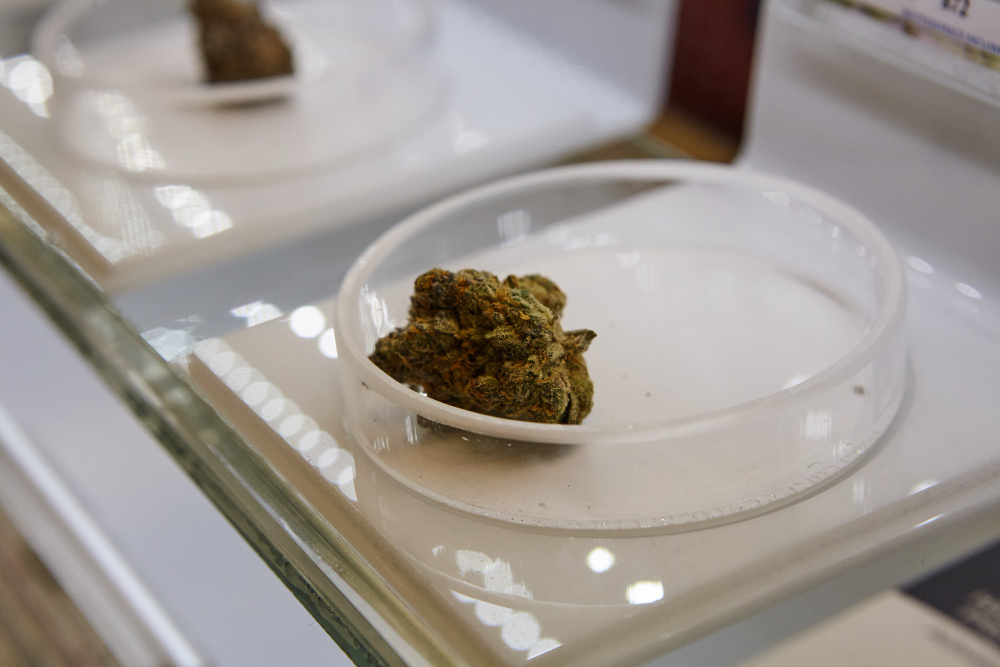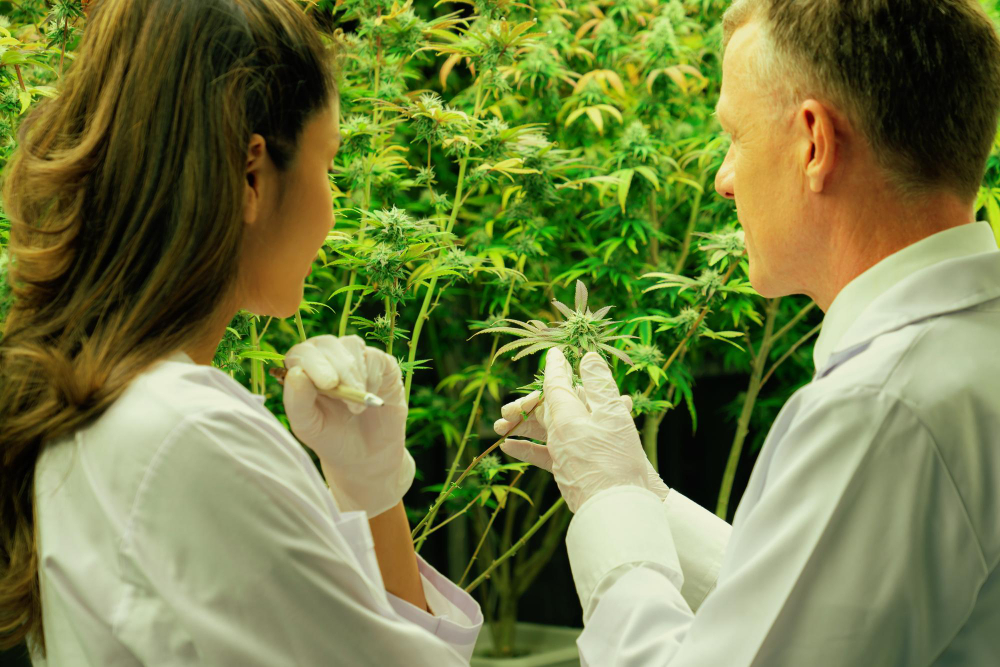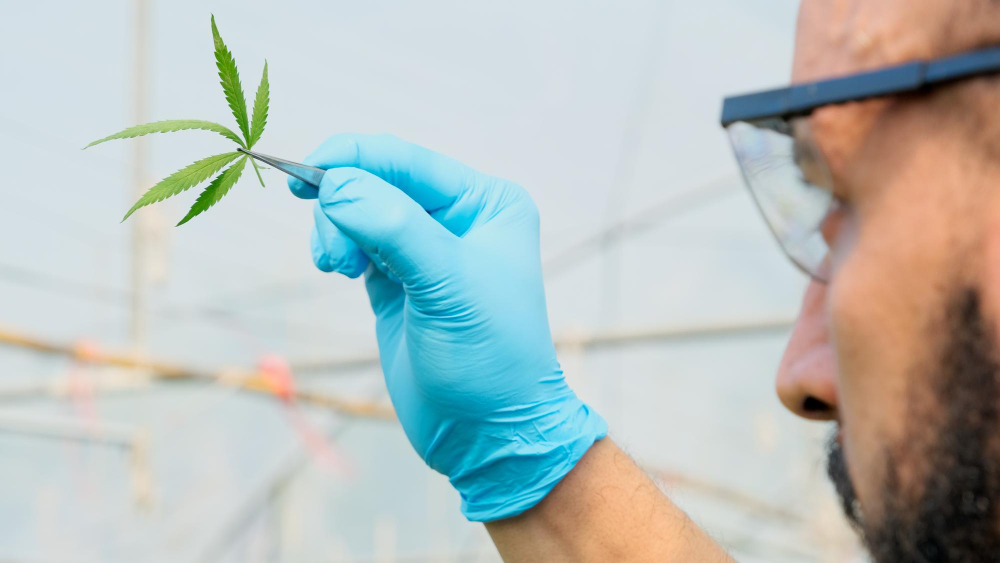Cannabis sativa vs indica are two primary varieties of the cannabis plant, each with distinct characteristics. At Agropharm, we understand the importance of these differences in optimizing crop cultivation. Sativa tends to grow taller with narrower leaves and offers uplifting, energizing effects, while indica is shorter with broader leaves and provides relaxing, sedative effects. These varieties are often chosen based on the desired outcome, with sativa suited for daytime use and indica for nighttime.
Understanding cannabis: Two varieties of the same plant
Cannabis sativa and cannabis indica are two distinct subspecies of the same species, Cannabis sativa L. While they share the same genetic origin, the difference between cannabis sativa and cannabis indica lies in their appearance, growth habits, and effects. Both have a long history of medicinal and recreational use, each offering unique benefits.
Genetically, cannabis sativa vs indica shows that while both varieties come from the same plant species, sativa tends to be taller with narrow leaves and a longer flowering cycle, making it suitable for warmer climates. Sativa is known for its uplifting, energizing effects, often enhancing creativity and focus, making it ideal for daytime use.
In contrast, cannabis indica is shorter, with broader leaves and a quicker flowering cycle. Indica strains are more suited for cooler climates and are known for their relaxing, sedative effects, commonly used to relieve pain and promote sleep. This makes indica better suited for nighttime use.
Despite their differences, both sativa and indica are genetically similar and share fundamental properties, with hybrid varieties often blending traits from both. Understanding the cannabis sativa vs indica distinction helps in choosing the right variety for your specific needs. At Agropharm, we specialize in optimizing the cultivation of both cannabis sativa and cannabis indica strains, ensuring high-quality yields while minimizing energy consumption.
Visual Aspects: How to identify cannabis sativa and indica
When comparing cannabis sativa vs indica, one of the easiest ways to distinguish the two is by their physical characteristic. Both varieties of cannabis are visually distinct, with differences in height, shape, and overall growth patterns. These differences are crucial for growers, as they can affect cultivation techniques and yield potential.
Cannabis Sativa plants are typically tall and slender, growing much taller than their indica counterparts. They can reach heights of up to 12 feet or more under ideal conditions. Sativa plants feature narrow, elongated leaves that give them a more delicate appearance. The branches of sativa plants grow in a more spaced-out fashion, allowing the plant to spread widely. Sativa plants tend to have a longer flowering period, which means they require a warmer climate to fully develop. Sativa varieties thrive in tropical and subtropical regions where the growing season is longer.
Cannabis Indica, on the other hand, is much shorter and bushier. These plants tend to have a stocky structure with broader leaves that give them a more compact and dense appearance. Indica plants generally stay between 3 to 6 feet tall, making them more suitable for smaller grow spaces. The growth pattern of indica is more compact, with shorter internodes between branches. This subspecies is well-adapted to cooler climates, and its relatively quicker flowering cycle allows it to thrive in areas with shorter growing seasons. Indica plants are commonly found in mountainous or temperate regions, where they can handle cooler temperatures more effectively.
While both cannabis sativa and cannabis indica are genetically similar, the cannabis sativa vs indica distinction is most evident when it comes to growth structure and the climate in which each variety excels. Whether you’re looking to cultivate cannabis in a warm or cool environment, understanding these visual and environmental aspects will help you choose the right variety for your conditions.
Flowering time: How sativa and indica differ in growth cycles
When comparing cannabis sativa vs indica, one of the most significant differences lies in their flowering times. The flowering cycle of a cannabis plant is crucial for determining the total time required for growth, which in turn affects cultivation and harvesting schedules.
Cannabis Sativa plants have a much longer flowering time, typically ranging from 12 to 16 weeks. This extended flowering period is a result of sativa’s slower maturation process. During this time, the plant focuses on growing taller, developing larger buds, and producing higher levels of THC, which contributes to its energetic and uplifting effects.
However, the longer flowering time means that sativa strains require a longer growing season and are better suited to tropical or subtropical climates where the growing season is extended. This longer cycle can be a challenge for growers in areas with shorter growing seasons, as it can limit the number of harvests in a year.
On the other hand, Cannabis Indica strains have a shorter flowering time, usually between 8 to 12 weeks. Indica plants mature more quickly, which is ideal for growers in cooler or temperate regions where the growing season is shorter. Indica’s faster flowering time also means it is more efficient for cultivation, as it allows for quicker harvests and the potential for multiple harvests per year. The compact structure and rapid maturation of indica plants make them popular among growers who need to maximize space and time, especially in indoor cultivation setups.
The cannabis sativa vs indica difference in flowering time has a direct impact on cultivation strategies. For growers, sativa’s extended flowering period requires more patience and careful planning to ensure optimal conditions for the entire growth cycle. Indica’s shorter flowering time, on the other hand, allows for more flexibility and quicker turnaround, making it an attractive option for those with time constraints.
Effects: How cannabis sativa and indica affect the body and mind
When considering the cannabis sativa vs indica debate, one of the most important factors to understand is how these varieties affect the body and mind. Both sativa and indica have distinct effects, which can influence a user’s experience depending on the time of day and the desired outcome.
Cannabis Sativa is known for its energizing and uplifting effects, making it ideal for daytime use. It tends to stimulate the mind, promote creativity, and increase focus, making it a popular choice for individuals seeking mental clarity and motivation. Sativa is often chosen by those who need a boost of energy, whether for physical activities, work, or social interactions. The effects are typically more cerebral, providing an elevated, euphoric feeling that helps reduce stress and anxiety without causing drowsiness. Sativa is especially beneficial for people dealing with conditions like depression, fatigue, and chronic pain, as its energizing effects can help improve mood and activity levels.
In contrast, Cannabis indica is known for its deeply relaxing and sedative effects. Indica strains are ideal for evening use, helping users unwind after a long day. Their calming nature can alleviate symptoms of stress, anxiety, and muscle tension. Indica is especially effective for promoting sleep, making it a go-to option for those struggling with insomnia or sleep disorders. The sedative properties can also provide relief for chronic pain, inflammation, and conditions like fibromyalgia, offering a soothing and restful experience. Indica’s calming effects can also benefit people with anxiety disorders, providing a sense of peace and tranquility.

Many growers and consumers opt for hybrid strains that combine the traits of both cannabis sativa and cannabis indica. These hybrids offer a balanced effect, incorporating the energizing properties of sativa with the calming, relaxing nature of indica. The ratio of sativa to indica in a hybrid strain can be adjusted to suit a wide range of needs. Some hybrids may lean more toward sativa for daytime use, while others may have a higher indica content, making them more suitable for nighttime relaxation. This flexibility allows users to tailor their experience, creating the perfect balance between mental stimulation and physical relaxation.
Understanding the difference between cannabis sativa and cannabis indica is key to choosing the right strain based on your personal needs, whether you’re seeking energy or relaxation. At Agropharm, we provide expert insights into the cultivation and effects of both cannabis sativa and cannabis indica strains, ensuring you can make the most informed decisions.
Medicinal uses: Sativa vs Indica in healthcare
Both cannabis sativa and cannabis indica offer unique therapeutic benefits, and understanding their specific medicinal applications is key to choosing the right strain for individual health needs.
Cannabis sativa: Energizing relief for mental health and focus
Cannabis Sativa is often favored in the medicinal world for its ability to provide energizing and uplifting effects. These qualities make it an ideal choice for treating conditions that require mental focus and energy. For individuals suffering from depression, fatigue, or mood disorders, cannabis sativa vs indica becomes an important consideration. Sativa’s stimulating properties help enhance motivation, improve mood, and reduce feelings of lethargy or sadness. It can be particularly helpful for people with seasonal affective disorder (SAD) or those experiencing low energy due to chronic conditions.
Sativa’s effects are also beneficial for those with attention disorders or cognitive issues, as it can help enhance focus and clarity. Patients with conditions like ADHD may find that sativa strains help them stay focused and productive, without the sedative effects that could impair their daily functioning. Additionally, cannabis sativa has shown promise in providing relief for chronic pain conditions that involve nerve sensitivity or muscle stiffness, offering pain management without the heavy sedation that indica might induce.
Cannabis indica: Relaxation and pain relief for physical conditions
On the other hand, Cannabis Indica is primarily known for its sedative and relaxing effects, making it a go-to treatment for individuals dealing with physical pain or sleep disorders. The medicinal uses of cannabis indica are particularly valuable for those suffering from insomnia, as its calming properties can help promote deep, restful sleep. Indica’s ability to reduce anxiety and stress also makes it effective in managing conditions like generalized anxiety disorder (GAD), social anxiety, and PTSD. Its sedative effects help ease mental strain, allowing users to unwind and find peace.
Indica strains are widely used for chronic pain relief, especially in conditions like arthritis, fibromyalgia, or multiple sclerosis, where muscle spasms and pain can be debilitating. The calming properties of indica help relax muscles and reduce inflammation, making it ideal for those seeking physical relief without the harsh side effects of traditional medications. It also helps alleviate nausea and stimulate appetite, making it an effective choice for individuals undergoing chemotherapy or suffering from eating disorders.
Hybrid strains: Combining medicinal benefits of sativa and indica
The rise of hybrid strains has introduced a new way to blend the medicinal benefits of both cannabis sativa and cannabis indica. Hybrid strains offer a balanced effect, allowing users to enjoy the best of both worlds: the energizing properties of sativa combined with the calming, pain-relieving benefits of indica. By adjusting the ratio of sativa to indica, hybrids can be tailored to treat a wide range of conditions, from chronic pain to mental health issues, offering a customized medicinal experience for individuals with varying needs.
On the other hand, it is necessary to mention that there is another subspecies of cannabis called ruderalis. Currently, experts are still debating how to correctly classify the Cannabis sativa L. plant. Some suggest that cannabis can be classified into three different species (Cannabis indica, Cannabis sativa and Cannabis ruderalis).
The ruderalis variety, although its THC concentrations are normally small, possesses a quality that no other cannabis species has: it flowers automatically or independently of the photoperiod. This allows it to move into its flowering phase according to its age, rather than a change in the light cycle. When these genes are introduced into hybrid strains, it allows for several crops per year, independent of daylight hours.
Different seed banks are actively experimenting with ruderalis strains and crossing them with indicas and sativas to produce potent, reliable and easy to grow autoflowering hybrids.

How Agropharm supports efficient cannabis cultivation
The cannabis sativa vs indica distinction plays a crucial role not just in consumption, but in how each variety is cultivated. From the taller, longer-flowering sativa plants to the compact, fast-growing indica strains, each requires specific environmental conditions, nutrient management, and crop strategies to reach its full potential. With the rise of hybrid strains blending traits from both and from ruderalis, precision in cultivation has become more important than ever.
Agropharm brings over a decade of expertise in horticultural consulting, specializing in high-performance cannabis production across Spain and Portugal. We design and manage customized cultivation systems that optimize yield, ensure product homogeneity, and reduce energy expenditure. Whether working in greenhouses or indoor facilities, Agropharm integrates cutting-edge agricultural technology with deep agronomic knowledge to help producers meet both market demands and regulatory standards.
By focusing on efficiency, quality, and sustainability, Agropharm empowers growers to succeed in an increasingly competitive industry. Do you have any doubts? Contact us and we will be happy to help you.
